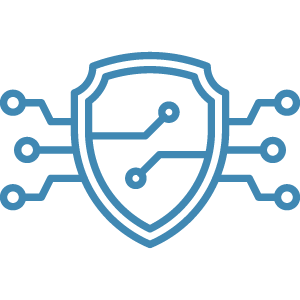It may seem counterintuitive, but technology companies are as vulnerable to cyber attacks as any other industry. Not only must these organizations protect their internal systems and data, but they also must protect their test, development, and production environments – all of which are inherently vulnerable to cyber attacks.
With such a heightened focus on innovation, shouldn’t technology companies present an impenetrable fortress against cybercrime?
The issue is not as simple as it may seem. Technology companies are complex, with multiple layers, intricate interconnections and data pathways, employee and client access controls, and ongoing development plans. Unfortunately, in early-stage companies, hiring a dedicated cybersecurity professional is often not a top priority. Instead, the focus is on speeding up innovation and gaining market share. While these are crucial for business growth, a data breach or ransomware attack could potentially destroy the business.
Coupling innovation with cybersecurity
In virtually every industry, there has been an increase in the number of cyber attacks, worldwide. Artificial intelligence (AI) has only exacerbated the problem, allowing cybercriminals to become more sophisticated and varied in their attempts. Even tech-savvy professionals – as you’d expect to see in a technology company – can find themselves falling victim to a phishing scam or other malicious event. It’s not just external threats, however; internal threats, whether intentional or not, are just as dangerous.
Microsoft can certainly attest to the danger associated with an insider threat. In a recent report from Reuters, a German software developer discovered odd behavior in a little-known program. Upon further investigation, he found that another developer had sabotaged the code, which, if pushed live, would have opened the door to millions of servers. Luckily, they discovered the threat in time, but the incident demonstrates the vitality of a strong cybersecurity protocol.
Additionally, Kory Daniels, CISO at Trustwave recently shared, “The continuous innovation that drives technology forward can be a double-edged sword. Our new research unveils the intricate network of dangers facing the tech industry. Even a minor security breach can cripple a company and cause cascading disruptions across the vital systems we rely on, including internal business operations, customer-trusted software and products, and the infrastructure supporting supply chains. To minimize risk exposure while staying ahead of threats, security needs to be embedded at every stage of the technology lifecycle.”
The U.S. Government has also emphasized the importance of technology companies playing a greater role in the fight against cybercrime. As Jake Braun, acting principal deputy national cyber director shared, “What we’ve been doing for about 40 years is bolting cybersecurity onto all the stuff we’ve built … and bolting cyber on the back-end is, as we found out, not really the most efficient way to do cybersecurity.” Braun is calling for technology companies to increase their focus on cybersecurity, building greater safeguards into their products to protect individuals.
Increasing safeguards within technology is only part of the solution. Technology companies also must increase their internal safeguards to ensure business continuity and data protection. That’s no small task, especially without the right resources.
5 key elements of a strong cybersecurity strategy
There’s no question that cybersecurity is essential to protect your business, your data, and your clients. But as many technology professionals can attest, maintaining a strong cybersecurity presence and avoiding cyber attacks can be downright challenging with so many other priorities in play. To break it down a bit, here are five key elements that will allow you to build a strong cybersecurity strategy that can withstand the test of time … and cyber criminals.
#1. Strengthen your cyber resilience. Be prepared to identify, respond to, and recover from cybersecurity threats. No company is immune to being targeted; but every company can be prepared with the right tools, resources, and backups to bounce back quickly.
#2. Create a culture of security awareness. Every person within your organization is a potential target for cybercrime. Arm your team with the information they need to effectively identify and report suspicious activity.
#3. Understand your threat landscape. Review your existing systems, access points, security training compliance, devices, drives, policies and procedures, and more to effectively identify any existing threats and gain a better understanding of the threat landscape within your organization.
#4. Continuously monitor and respond to potential threats. Cybercriminals don’t hold regular business hours. To effectively secure your data and systems, it’s important to monitor for suspicious activity around the clock.
#5. Don’t go it alone; partner with the experts at GainSide. You can’t protect what you can’t see. And with the speed of innovation, it’s difficult to maintain full visibility into every area of your business. At Gainside, we are experts in cybersecurity and cyber resilience so you don’t have to be. We act as an extension of your team, shoring up risk points and helping your team achieve true cyber resilience.
Ready to answer the call for stronger, more resilient cybersecurity? We can help. Reach out to one of our experts today!






